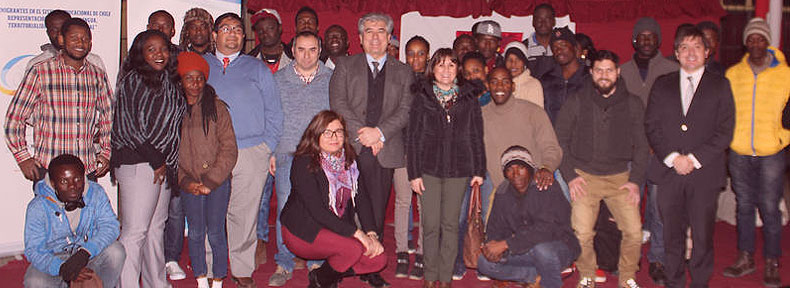Universidad Católica del Maule researcher Jaime Vásquez-Gómez presented the results of a study comparing walking speeds at a colloquium in Europe.
 Fast walking increases cardiorespiratory capacity and may potentially reduce the risk of heart disease, cancer, and other ailments, compared to the effects of normal or slow walking, according to Professor of Physical Education, Jaime Vasquez-Gomez.
Fast walking increases cardiorespiratory capacity and may potentially reduce the risk of heart disease, cancer, and other ailments, compared to the effects of normal or slow walking, according to Professor of Physical Education, Jaime Vasquez-Gomez.
The doctor in Physical Activity and Sport presented this and other recommendations at the IX Colloquium of Qualitative Research in Human Motricity, held by the Center for Social Studies of the University of Coimbra, in Portugal.
«It is not necessary to put on overalls and sneakers to go running or go to the gym. Walking briskly during a regular activity, such as buying bread or moving from the car to the office, can have cross-cutting health benefits and even cumulative effects on our cardiorespiratory health,» said the also member of the Center for Research and Advanced Studies of Maule (CIEAM), belonging to the UCM.
In his talk «Oxygen Consumption and Walking Speed: Population Survey in Chile,» the academic explained an analysis based on the latest National Health Survey (ENS), corresponding to 2016-2017.
 «I studied the cases of 5,200 people aged 15 years and older to examine how cardiorespiratory capacity is associated with the different walking speeds assessed in the survey; brisk, normal or slow. Since the survey involved a subjective evaluation, I considered a walking speed of six kilometers per hour or more as ‘fast,» said the expert at the congress. The event was also organized by the Society for Qualitative Research in Human Motricity and the Center for Interdisciplinary Studies of the Portuguese campus.
«I studied the cases of 5,200 people aged 15 years and older to examine how cardiorespiratory capacity is associated with the different walking speeds assessed in the survey; brisk, normal or slow. Since the survey involved a subjective evaluation, I considered a walking speed of six kilometers per hour or more as ‘fast,» said the expert at the congress. The event was also organized by the Society for Qualitative Research in Human Motricity and the Center for Interdisciplinary Studies of the Portuguese campus.
Vasquez-Gomez hopes to expand his findings on cardiorespiratory fitness (CRF) – defined as the sufficiency or ability of the circulatory and respiratory systems to supply oxygen to skeletal muscles during physical activity –and publish a peer-reviewed article in 2024.
During his trip to Europe, the academic also visited the Glasgow Cardiovascular Research Center in Scotland, where he learned about empirical methods of public health research, under the tutelage of a reference in the area, Dr. Carlos Celis.













